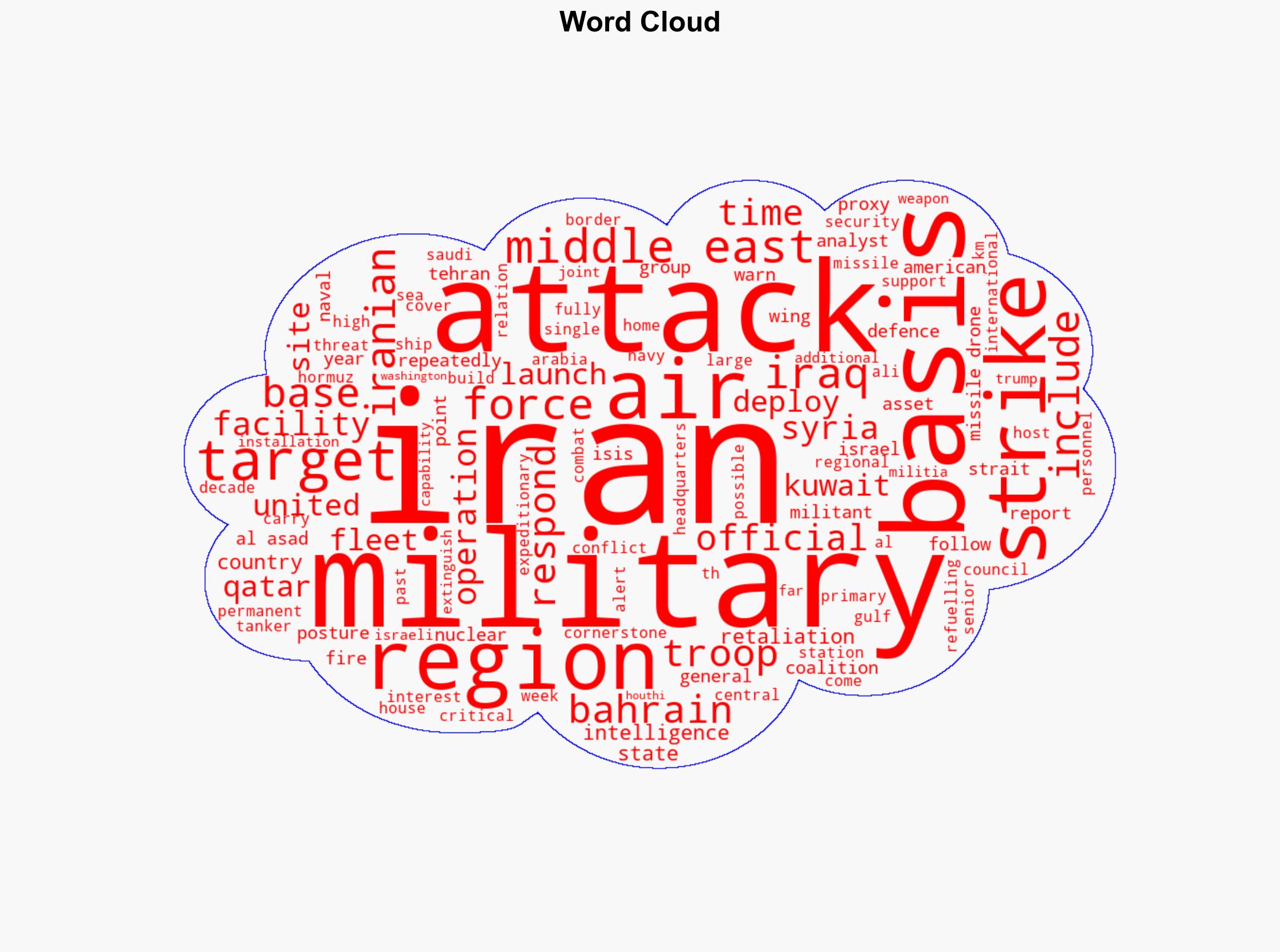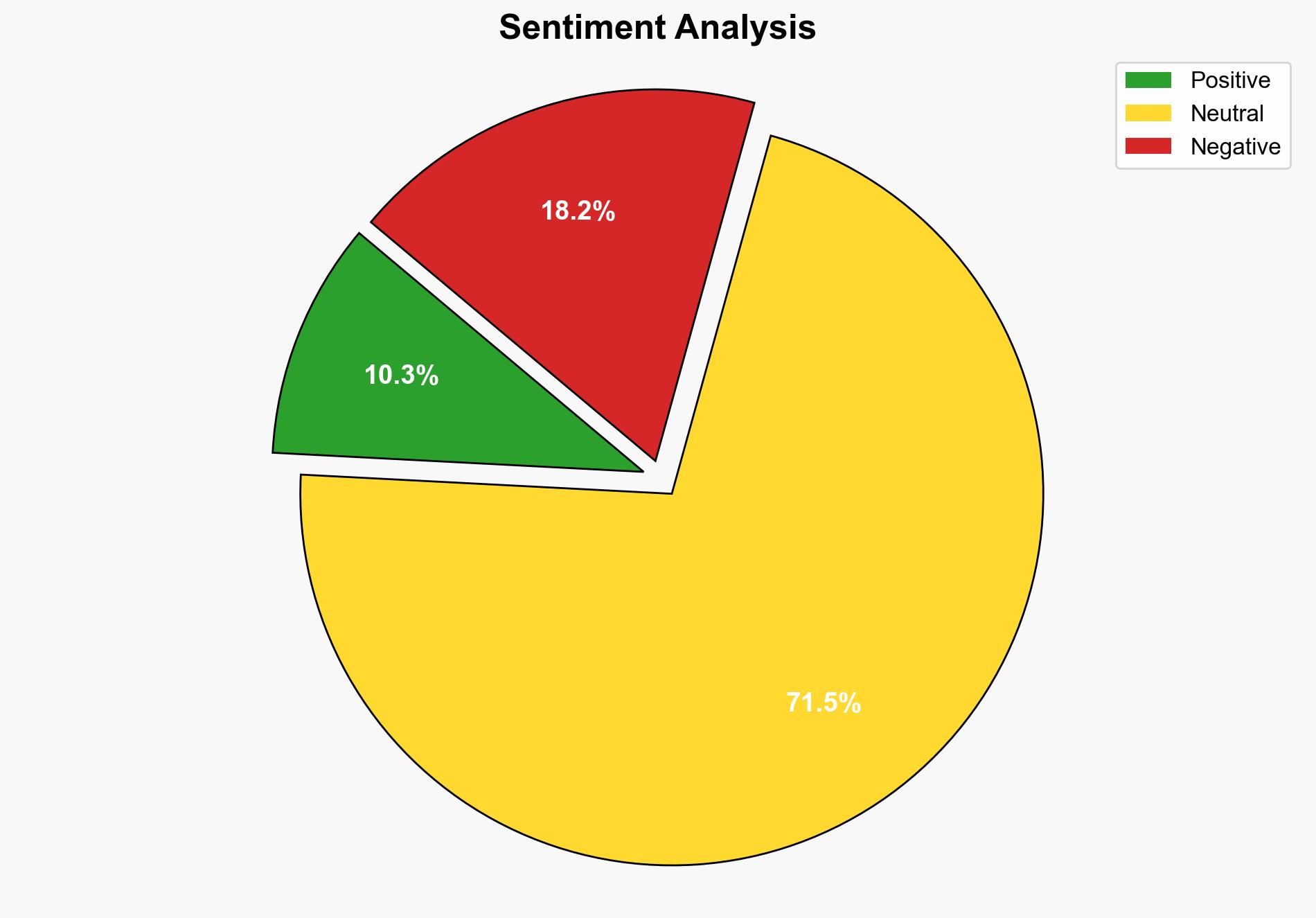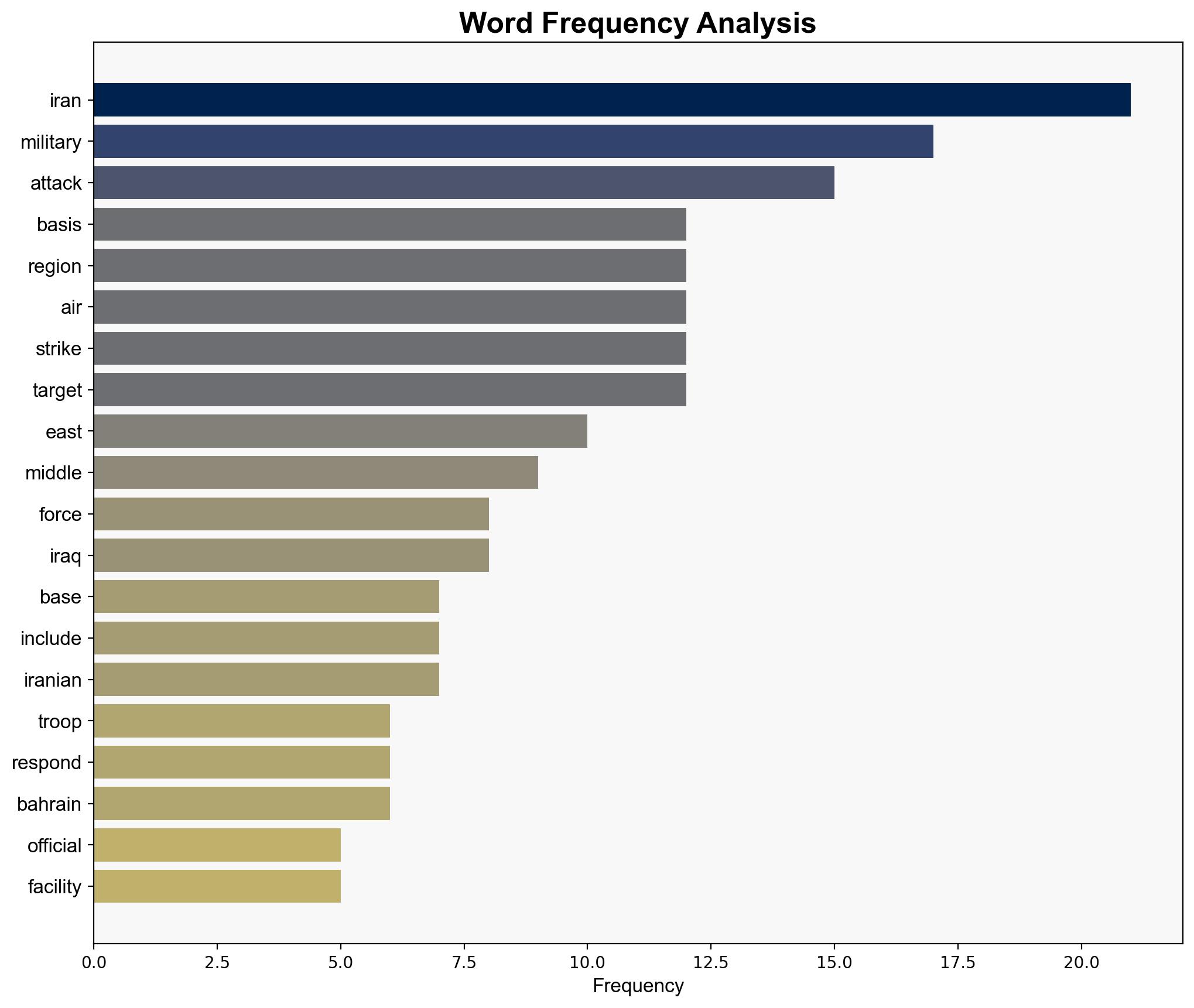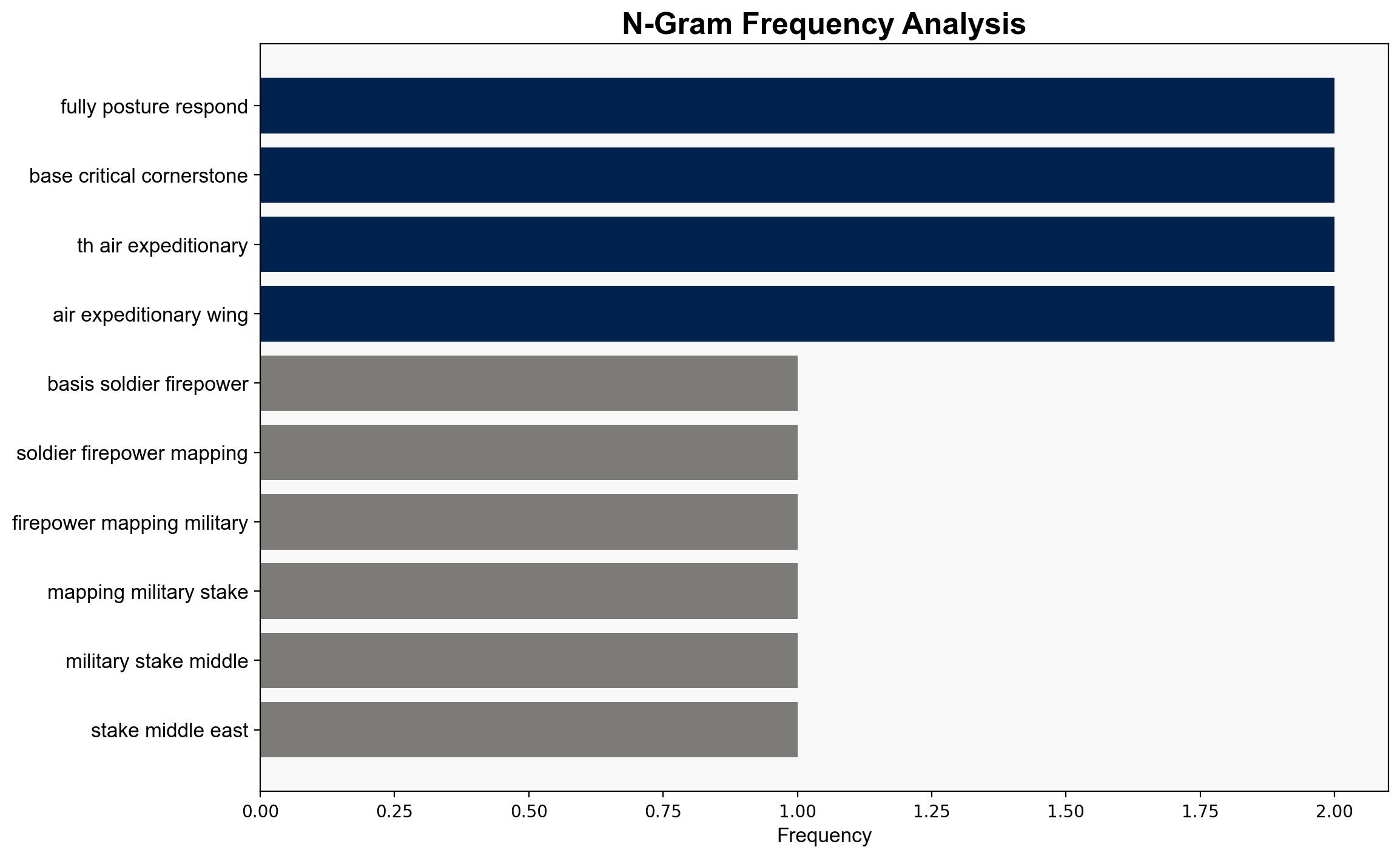Bases soldiers and firepower Mapping the US military’s stake in the Middle East – ABC News (AU)
Published on: 2025-06-23
Intelligence Report: Bases, Soldiers, and Firepower – Mapping the US Military’s Stake in the Middle East
1. BLUF (Bottom Line Up Front)
The United States maintains a substantial military presence in the Middle East, with key bases in countries such as Qatar, Bahrain, and Iraq. This presence serves as a strategic deterrent against regional threats, particularly from Iran, which has recently vowed retaliation following strikes on its nuclear facilities. The US military’s positioning is crucial for counterterrorism operations and maintaining regional stability. It is recommended to enhance intelligence-sharing mechanisms and reinforce defensive capabilities at these bases to mitigate potential threats.
2. Detailed Analysis
The following structured analytic techniques have been applied to ensure methodological consistency:
ACH 2.0
Using machine-assisted hypothesis testing, the intentions of threat actors, particularly Iran, have been reconstructed. The likelihood of Iran targeting US assets in the region remains high, given historical patterns and recent provocations.
Indicators Development
Monitoring digital radicalization and travel patterns is crucial to anticipate operational planning by adversarial groups. Enhanced surveillance of online propaganda channels is recommended to preemptively identify threats.
Narrative Pattern Analysis
The spread of ideological narratives is being analyzed to detect recruitment and incitement signals. This analysis assists in understanding the motivations behind potential attacks on US interests.
3. Implications and Strategic Risks
The US military’s presence in the Middle East faces several strategic risks, including potential retaliatory strikes from Iran and proxy attacks on bases in Iraq and Syria. The geopolitical landscape is further complicated by the involvement of other regional powers and non-state actors. Cyber threats targeting military infrastructure also pose significant risks, necessitating robust cybersecurity measures.
4. Recommendations and Outlook
- Enhance intelligence-sharing with regional allies to improve threat detection and response capabilities.
- Strengthen defensive measures at key military installations to deter and mitigate potential attacks.
- Scenario-based projections suggest that in a best-case scenario, diplomatic engagements could reduce tensions. In a worst-case scenario, escalation could lead to broader regional conflict. The most likely scenario involves continued low-intensity skirmishes and cyber operations.
5. Key Individuals and Entities
Hossein Shariatmadari, a representative of Iran’s supreme leadership, has been vocal in articulating potential threats against US interests in the region.
6. Thematic Tags
national security threats, cybersecurity, counter-terrorism, regional focus





